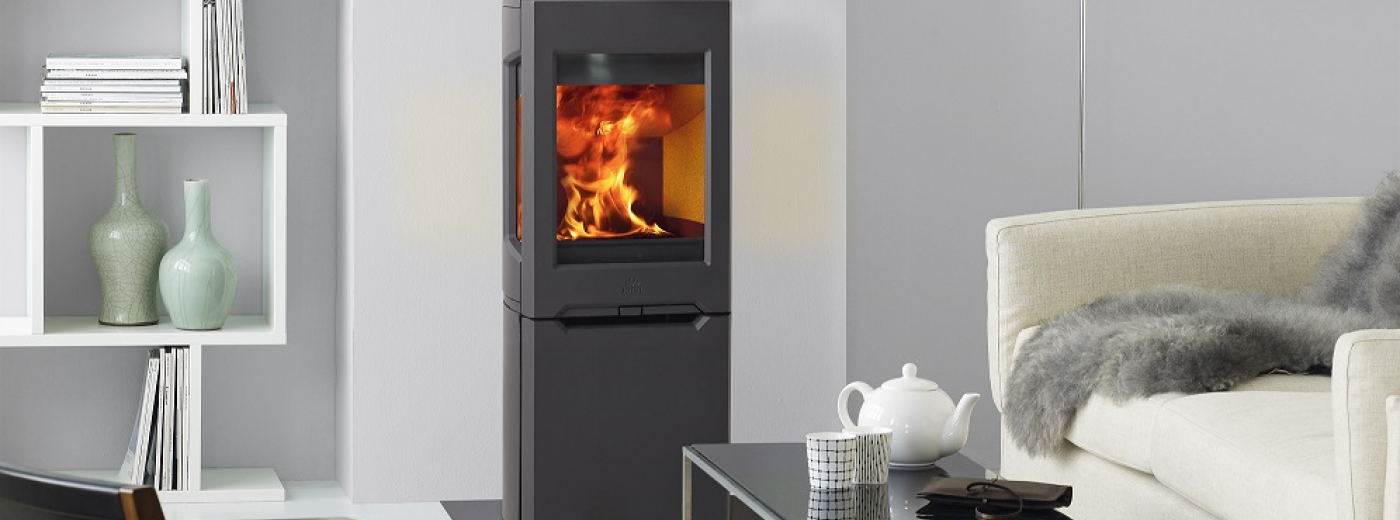Clean Burning Wood Stoves Cut Health Costs
Find out why clean burning is so important in reducing health costs.
Find out why clean burning is so important in reducing health costs.
As a leading manufacturer of wood stoves and fireplaces, Jøtul has pioneered the development of clean burning wood stoves since the early 90’s. For as many years, the company has worked actively towards government initiatives, environmental goals and alongside organisations nationally and worldwide, in order to spread the importance of clean burn.
Today many municipalities in Norway and further afield to fund replacements of older wood stoves with new clean burning stoves.
“It’s important for us to inform not only the governments and organisations of the importance of clean burning wood stoves, but also the consumer. That new clean burning wood stoves reduce particulate emission with up to 90% and use over 40% less wood due to higher efficiency, helps the consumer make an economic, healthy, and environmentally friendly choice”, says René Christensen, Jøtul Senior Vice President Sales.
Jøtul supports the recently released independent report “Cleaner wood burning cuts health costs”, written by Sintef and Norwegian Energy for the Norwegian Directorate of Environment.
Faster replacement of old stoves, better maintenance and several other measures can provide a climate benefit while reducing health costs from wood burning with several billions a year. These are the estimates of the recently published report Norwegian Energy and SINTEF made for the Directorate of Environment.
In conjunction with the Directorate of Environment’s work with short-lived climate forcers, i.e. emissions that for a limited period contributes to warming or cooling of the atmosphere and air pollution, we have studied measures for cleaner fuel wood.
The report examines six different wood burning initiatives and how they by 2050, can reduce emissions of short-lived climate forcers.
Wood burning emit components such as methane, carbon dioxide (CO2), volatile organic compounds, nitrogen oxides, sulphur, and particulate matter (particles). Particulate matter consists of black carbon, which has warming effect, and organic carbon, which has cooling effect. All emissions affect the climate, and several of them, especially particulate matter, have health effects. The report was primarily made to calculate the reduction in emissions, which can be achieved by implementing the six initiatives. In addition, the authors estimated socio-economic profitability including measures the health effect.
The initiatives reduce the climate impact of Norwegian emissions in a 10-year perspective. This is equivalent to about 2% of the warming from Norwegian CO2 emissions. Yet, long term the climate effect is limited. The reason is that short-lived climate forcers only stay a short time in the atmosphere, and CO2 emissions from wood are considered climate-neutral.
The authors of the report have used established valuation factors, i.e. health benefits specified in kroner per kilo aerosol emissions, to calculate the value of the health effects of these measures. It is not possible to conclude on how much and how consumers will heat with wood in the future. Whether how considerable reductions in emissions the initiatives will give, nor the value of health damage. Such assessments can therefore never be completely precise and are only estimates based on the best available knowledge.
The calculations above are for towns with up to 100,000 inhabitants. If the initiatives are implemented solely in locations with more than 100 000 inhabitants (Oslo, Bergen, Stavanger, Trondheim, Drammen, Fredrikstad), estimated health benefits per kilogram aerosol emissions, are estimated to be more than seven times higher.
The report describes some existing instruments to reduce emissions from wood burning. Funding to replace old stoves found in individual municipalities and these can the report be expanded and strengthened. In addition, support is provided to implement measures to improve maintenance, electrostatic particle purification and improved restriction. The municipality may regulate emissions from wood-burning if there is a risk of violating pollution regulations minimum particulate matter. The report notes that the prohibition of the use of older stoves can be considered either permanently or intermittently and/or areas with high particulate matter levels.
